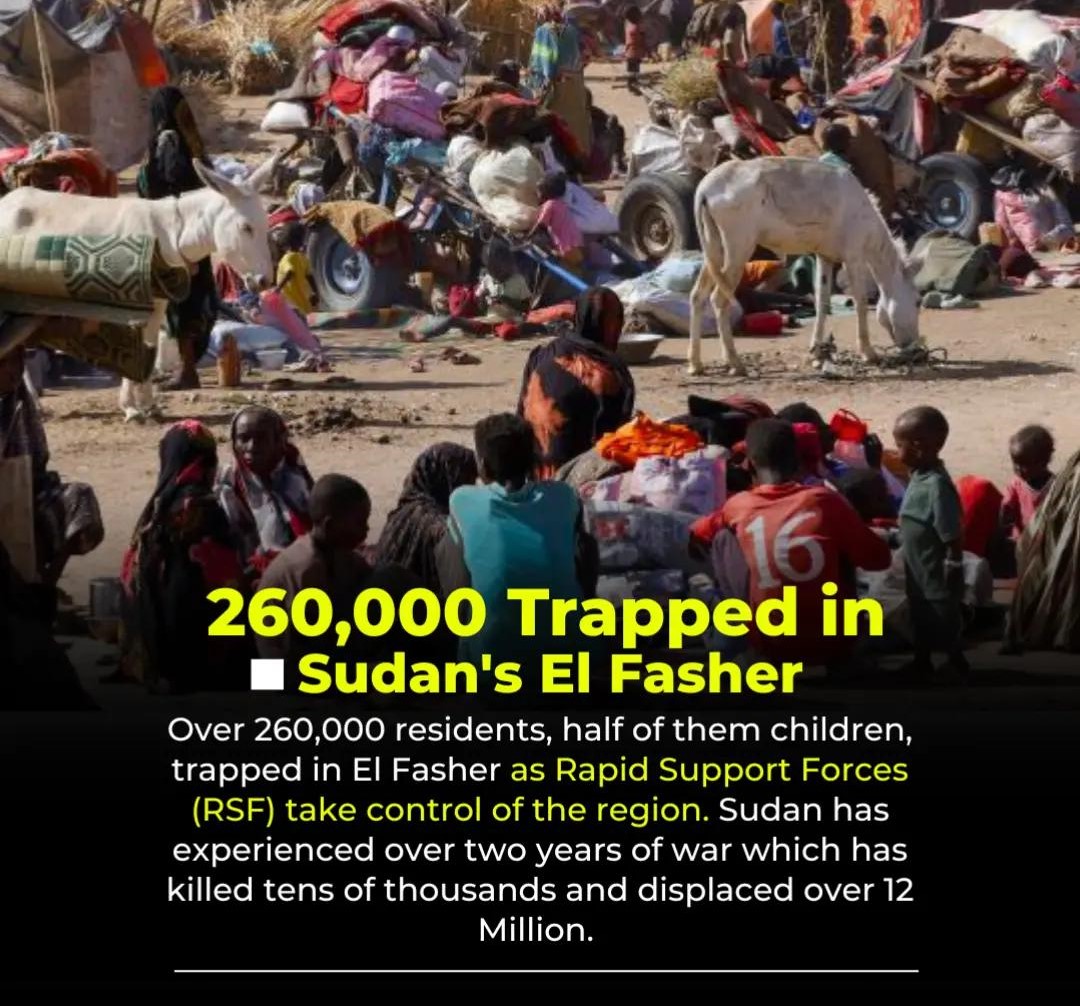The military context
What is occurring in El Fasher is part of the broader civil war that erupted in April 2023 between the Sudanese Armed Forces (SAF) and the RSF. The power struggle has resulted in large-scale destruction, tens of thousands of deaths, and millions displaced.
El Fasher was one of SAF’s last major strongholds in Darfur. On 26 October 2025, the RSF declared it had “extended control” over the city after an 18-month siege. The fall of El Fasher is considered a significant turning point — it gives the RSF near-full control of Darfur’s main urban centres and raises fears of Sudan’s fragmentation.

Humanitarian nightmare for civilians
With the city now under RSF control, reports of summary executions, mass killings, ethnic targeting, and hostage-taking have surged. According to satellite data analysed by Yale Humanitarian Research Lab, the scale of violence is “unprecedented,” showing clusters of objects consistent with human bodies.
One particularly chilling incident: At the World Health Organization’s request, it was revealed that over 460 people—including patients, healthcare workers and visitors—were reportedly executed by RSF fighters at the Saudi Maternity Hospital in El Fasher.
Survivors speak of being stopped at RSF checkpoints, separated by gender or age, many unable to flee. Some were asked to pay large ransoms ($8,000–$50,000) to secure release; those who could not were killed.
Children arriving in neighbouring towns such as Tawila are gravely malnourished — in one case, every child under five among a newly arrived group showed signs of severe acute malnutrition.
Siege, displacement and isolation
The siege of El Fasher cut off communications, humanitarian supplies and evacuation routes, trapping the civilian population. Before the fall, more than 260,000 people were reported to still be in the city.
Between 62,000 and tens of thousands have managed to flee since the RSF takeover — but the vast majority remain. The siege conditions, the mass killings during escape attempts, and the communications blackout combine to create what many aid agencies describe as among the worst humanitarian disasters on the planet right now.
Ethnic targeting and risk of genocide
Analysts say the violence in El Fasher is not random but appears to follow patterns of ethnic targeting: the RSF, descended from the Janjaweed militia, has a history of attacks on non-Arab communities in Darfur. The Yale lab summary suggests “forced displacement and summary execution” of non-Arab groups such as the Fur, Zaghawa and Berti.
Some international actors now describe the events as bordering on genocide.
Wider implications
-
The RSF’s capture of El Fasher further weakens SAF’s hold over Darfur, shifting power-balances in the civil war.
-
A fragmented Sudan (with Darfur slipping out of central control) becomes a looming possibility.
-
The scale of displacement and humanitarian breakdown — already in the millions across the country — is compounded by the scenario in El Fasher. The UN has repeatedly warned of worsening famine, disease and mass displacement.
-
The violence and human rights violations raise serious questions of international accountability, war-crimes investigations, and the role of foreign actors backing either side.
What’s next?
The situation remains fluid and extremely dangerous. Key questions include:
-
Will humanitarian access be restored to El Fasher and nearby areas?
-
Can civilians still flee safely, or are they being systematically prevented and killed?
-
Will the international community intervene more decisively — diplomatically or via sanctions — to prevent further mass atrocities?
-
Can any form of cease-fire or peace process gain traction, or is the war headed toward further fragmentation and ethnic cleansing?
In short: El Fasher stands as a grim symbol of the tragedy unfolding across Sudan — tens of thousands killed, an entire population trapped, and a city turned into what survivors describe as a “killing field.”




